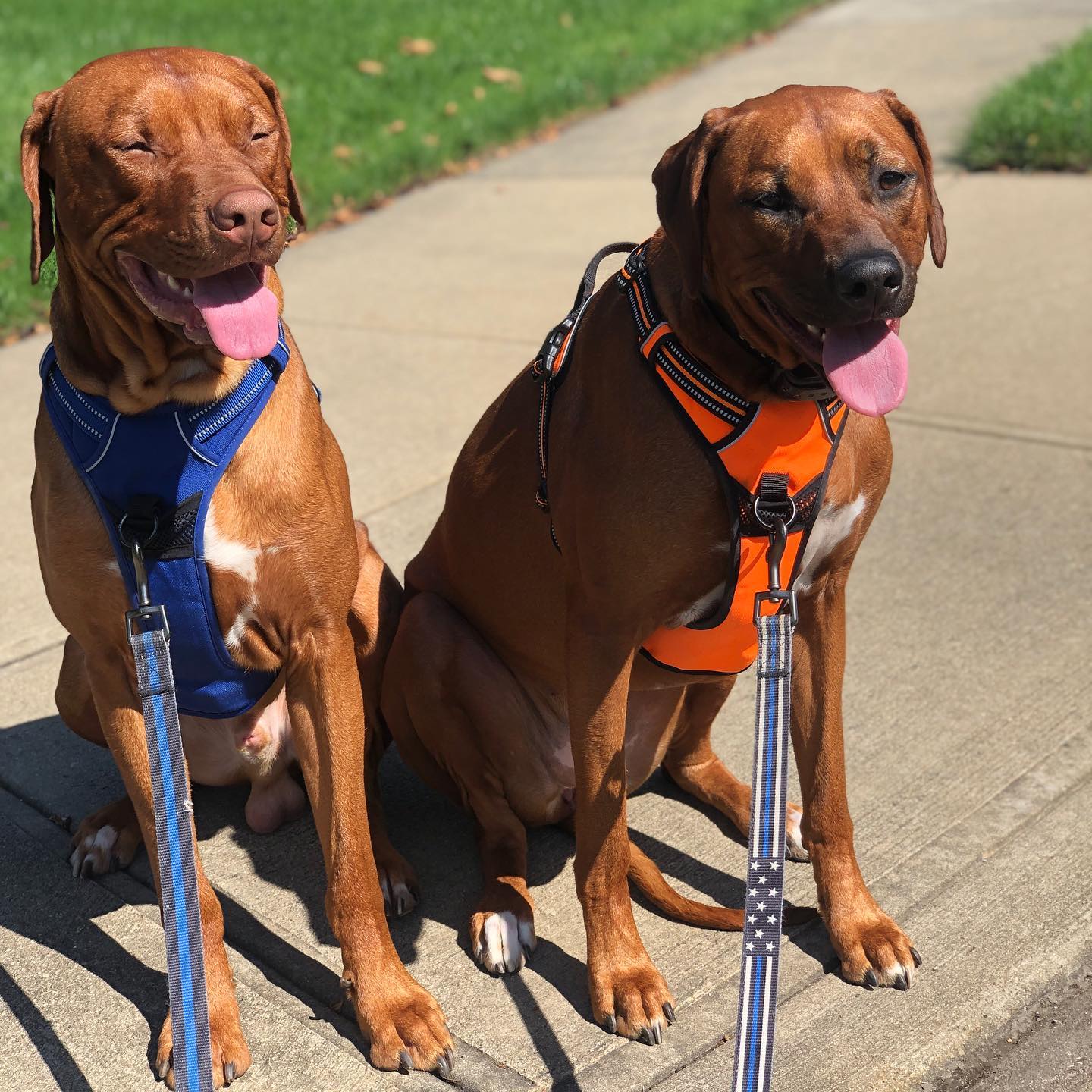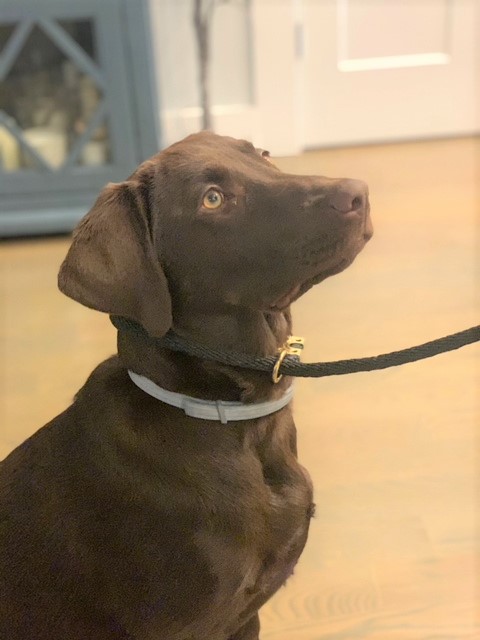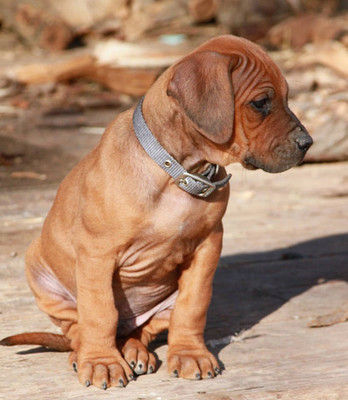Collar or Harness?
North Woods Animal Treats on May 19th 2021
Even the best-behaved dog in the world wears a collar or a harness. They may walk around without a leash attached to it, but they wear one, to hold ID, tags, and usually, to have a leash of some sort attached to it. But how do you decide which your dog should wear? Or, what about using both?
The most basic and standard equipment is the collar. It is buckled around the neck with D rings to attach the leash, the tags, and the ID to. They, like the harnesses come in all kinds of materials with all kinds of looks. There is a type of collar worth mentioning if you have ever seen a dog with his jaw stuck under the collar of the dog he is playing with, it is a quick release collar. When a certain amount of pressure is applied, the collar latch comes apart and the collar comes off the dog’s neck.
A martingale collar is also called a limited slip collar. Unlike a choke, or slip collar which can get tighter and tighter, the martingale can only get tighter by the amount the handler has adjusted the collar. Hence, it is called a limited slip collar.
A collar that seems to be more and more popular and used by more and more trainers, even with inexperienced dog owners, is the prong collar. This is a slip collar with prongs in it that lay against the dog’s neck and apply pressure and eventually could puncture the skin if the collar is tight enough. The other type of collar showing up lately is the shock collar, sometimes called a vibration collar. Even tiny dogs are showing up with these types of collars. It seems like these collars should only be used in extreme circumstances by accredited trainers, not the average dog owner.

A harness in general goes over the dog’s head and behind and under his elbows. It spreads the pressure over a larger area of his body, reducing strain on his neck and back. Some dogs are such pullers when on a leash with a collar, they can hurt their tracheas and neck. And, no one wants that!
Attaching the leash to a harness can be, in general, at the top or on the side. If the dog doesn’t pull, attaching the leash at the top works great, but if the dog is a puller, this may simply give him a force to pull against. Great for a husky pulling a sled, but not so great if you are just trying to walk down the road.
Harnesses are also a better choice if you have an escape artist who is out of his collar in a moment. Although a dog can get out of a harness, it is harder. There are myriad types of harnesses available, both in terms of materials but also in terms of application to control. There is always a new one coming to market. Some that applies the slip technology, squeezing the ribcage, or all of the dog where the harness touches him.
Sometimes using both a collar and a leash is a good idea. The collar stays on all the time, and holds the ID and tags, while the harness goes on for the walk. And often people use different types of leashes or harnesses depending on the activity that is going to be enjoyed. Sometimes you may want something easy on and off, sometimes you may want a bit more control.

There is a collar leash combination called a slip leash. This has a loop which is the collar part and snugs up to be in contact with the dog’s neck. This is often the chosen equipment when you need to quickly get the dog, no need to fumble with the D rings on the collars, etc. We proudly offer one that is hand made of American material, the same material a horse lead is made of. This means it has a good hand feel, is super strong and washable. We call it the Extra Leash, as a slip shouldn’t be used as the exclusive leash but is often used from the house to the car or from the car to the trailhead, or left in the car to be used if you forget a leash, or even find a loose dog while on your travels. Check it out on our website here.
There are so many choices of equipment to use on your woof, it can be hard knowing what to use. We are always of the mind to use the one with the least amount of influence you can while still maintaining control. You can always get something stronger, but if the dog gets used to more pressure, it is much harder to go lighter and easier. Then, get one that is the perfect color or pattern to compliment your dog’s look!

